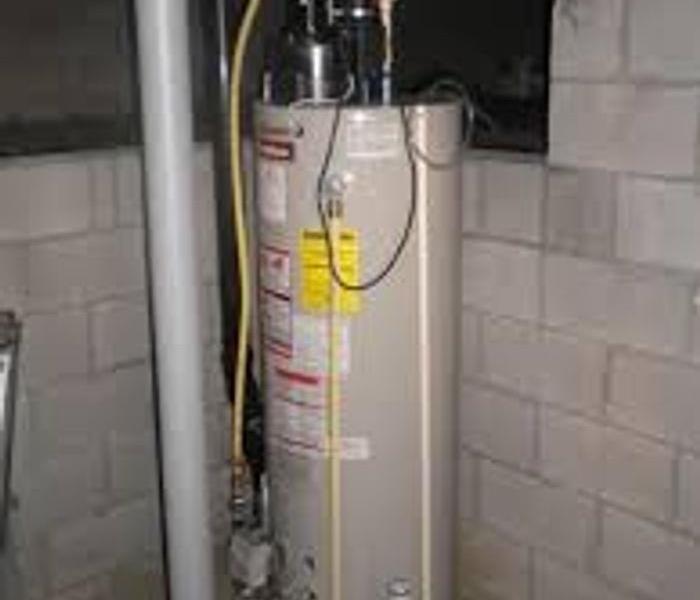Tips for Effective Water Heater Maintenance
8/1/2022 (Permalink)
 The most effective water heater maintenance can additionally minimize the likelihood of breakdowns, which is important in ensuring minimal disruption
The most effective water heater maintenance can additionally minimize the likelihood of breakdowns, which is important in ensuring minimal disruption
Maintaining your water heater is vital for many reasons. It is likely that you don’t realize how much you actually rely on your water heater. Your water heater provides many integral components to your home’s functionality, including allowing you to wash dishes and take showers. Without hot water, you won’t be able to effectively kill germs and thoroughly clean anything. The appropriate maintenance can extend the lifetime of your water heater. It can also enhance the overall energy-efficiency of your water heater, which goes a long way toward minimizing your related energy expenses.
1. Regularly Inspect
It is important to take time to regularly inspect and examine your water heater. These inspections can help you to catch potential issues in the early stages, which is when they will be far easier to repair. Take a brief moment to ensure that your water heater is continuing to function appropriately and efficiently.
2. Flush Yearly
3. Insulate Tank
Insulating the tank can provide many benefits for a water heater. Not only will it reduce energy expenses, but it can also extend the overall lifetime of the water heater. An insulated tank will prevent heat from escaping, which means that the water heater won’t have to work as hard to heat the water. This requires less energy, which will lead to lower energy bills. In addition, it reduces the overall amount of strain that is placed on the tank, which ensures that it lasts for much longer.
4. Lower Temperature
Most water heaters are originally set at a temperature that is far higher than is practical. In fact, this can actually be dangerous as it can cause water to be heated to a temperature much higher than is safe, resulting in burns. Many water heaters are set as high as 140° when all potential uses for hot water can be accomplished with temperatures of 120° or lower. Not only will lowering the temperature to 120° lower your overall energy expenses, but it will also prevent burns and injury.
5. Test Temperature Pressure Relief Valve
Test the temperature pressure relief valve on a regular basis to ensure that it is operating as it is intended to. This valve is in place to release pressure when it builds up too much within a water heater. You can test the TPR valve by inserting a bucket beneath the discharge pipe that is connected to the valve. After you have a bucket in place, you can lift the lever. If water comes out and stops when you lower the lever, the temperature pressure relief valve is functioning effectively. However, if water doesn’t come out or there is significant leakage, it is likely that the valve will need to be replaced.
6. Replace Anode Rod
The anode rod is an important component of a water heater and it needs to be replaced regularly, generally around 5 years. The rod attracts corrosive minerals in the water so that they corrode the rod rather than the inside of the tank. When this rod has worn out, the corrosive minerals can wreak havoc on the interior of the tank. It is vital to ensure that your anode rod is still functioning appropriately to protect your water heater.
7. Replace the Air Intake Filter
Tankless water heaters use air intake filters. These filters keep debris from entering into the heater, which allows it to continue functioning effectively and easily. These filters need to be changed regularly to ensure that they continue to provide the necessary functions.
8. Insulate Pipes
Not only is it beneficial to insulate the tank of the water heater, but it can also be helpful to insulate the pipes connecting to the water heater. This is especially important during the winter months, when pipes can reach dangerously cold temperatures. Insulating the pipes can prevent water from freezing in the pipes, which can lead to burst pipes that can cause extraordinary amounts of damage. There are many ways to easily insulate pipes, which can help to protect your entire building.
9. Obtain Professional Inspection
Though you can regularly inspect your water heater, obtaining the services of a professional will be far more effective. They have the experience and knowledge necessary to ensure that they will be able to catch potential issues in the early stages. Effectively maintaining your water heater can go a long way toward preventing serious issues from occurring. However, there are also many different types of water heaters, so it is vital to understand how to maintain your specific water heater.
When issues arise with your water heater, they can significantly disrupt your life. Regular maintenance can go a long way toward preventing these issues and ensuring that your water heater continues to operate efficiently. Not only will this lower regular energy expenses, but it will also lower the likelihood of repair and replacement expenses.





 24/7 Emergency Service
24/7 Emergency Service